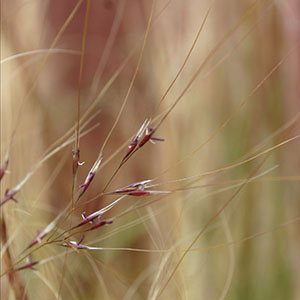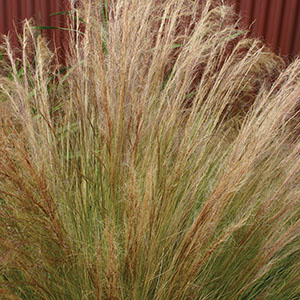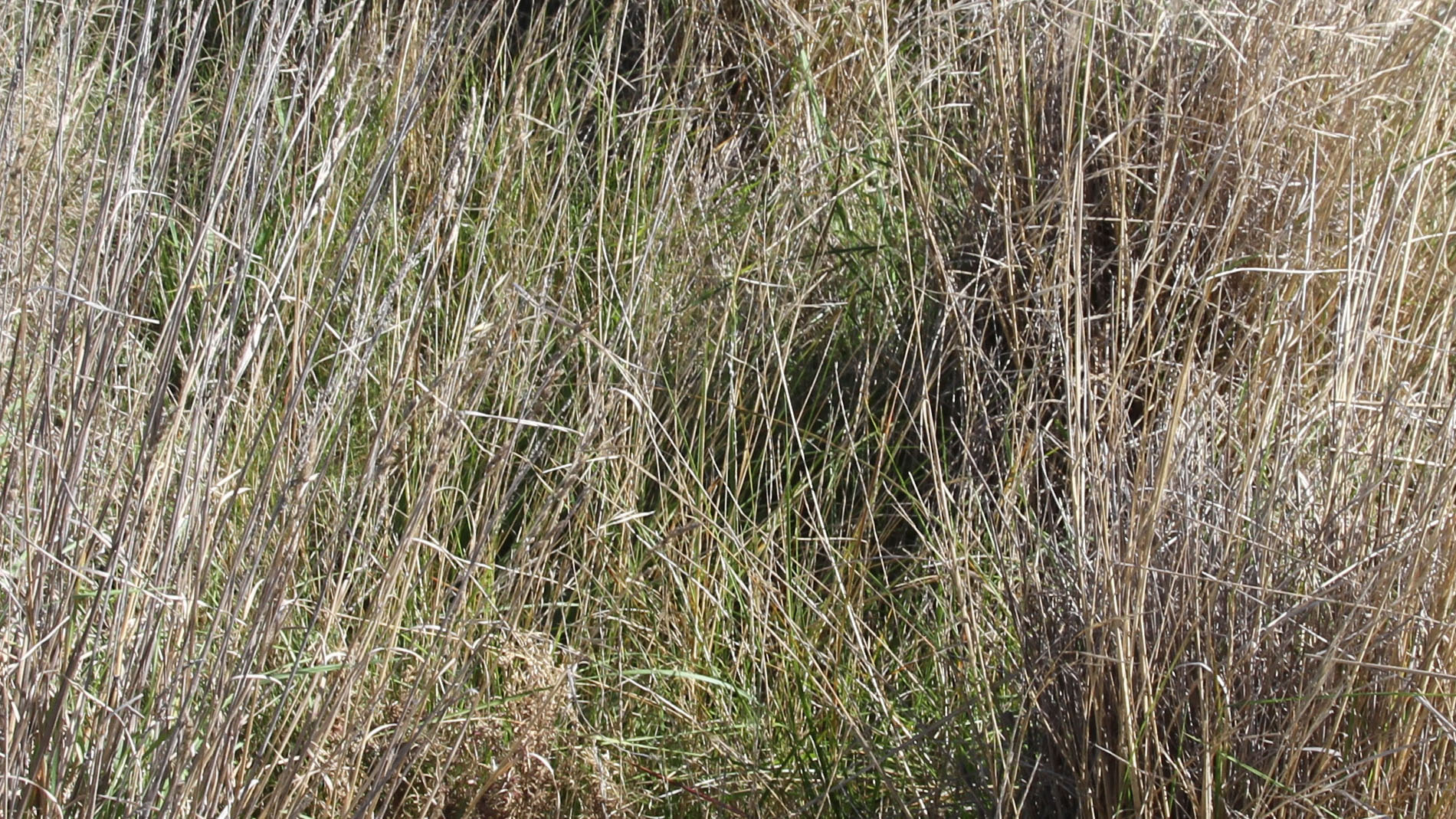| Management programme |
| Eradication |
| Objectives |
| Reduce the level of infestation of nassella tussock within the Waikato region to zero density to prevent adverse effects and impacts. |
| Impacts |
| Economic, biodiversity, animal welfare |
Nassella tussock, originally from South America, is thought to have been introduced to New Zealand accidentally during the 1860s but wasn’t formally identified until the 1930s. Nassella tussock cannot be digested by stock.
What does it look like?
Nassella tussock is a perennial tussock grass with erect or drooping leaves up to 70cm high and 80cm across.
Flowers
- Up to 2000 seed bearing panicles can be produced each season.
- Panicles fully protrude from the plant and detach at maturity.
- The majority of flowers produced in New Zealand are non opening and automatically self-pollinate (cleistogamic).
Fruit/seeds
- Each plant can produce up to 100,000 seeds per year.
- Seeds can last 20 years in the soil.
- Seed heads are branched, 25cm-95cm long and purple; they can give the plant a purplish tinge.
- Seeds can be blown long distances in strong winds, over 8km in some cases.
Leaves/stem
- Light green to yellow green leaves are thin and tightly rolled.
- When fingers are run down the leaf towards the base, the leaves feel tough and needle like.
- Stem is swollen just above ground level – like a shallot.

Nussella tussock seeds |

Nussella tussock clump |
Why is it a pest?
Nassella tussock can be seriously invasive, completely dominating low-producing grassland. Pasture carrying capacity can be significantly reduced because the leaves are unpalatable to stock. It forms pure stands in low-growing plant communities, especially in harsh sites, and prevents the seedlings of native species from establishing.
Seeds are produced in enormous numbers – up to 100,000 seeds per plant – and they can survive in the soil for 20 years. Seed banks of nassella tussock are immense and seed density can be 1755-42,390 seeds per m2 in NZ.






To ask for help or report a problem, contact us
Tell us how we can improve the information on this page. (optional)